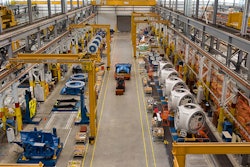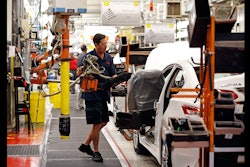The promise of the Internet of Things (IoT), termed by some to be part of an “Industry 4.0” revolution, is that it can extend a digital life to tens of billions of endpoints, create smart assets and smart infrastructure, and ultimately turn operational functions into strategic imperatives. If Industry 4.0 is to grow and flourish as envisioned it will be dependent, at least initially, on endpoints and networking infrastructure that is much less expensive to deploy and easier to manage than the “always on” IP infrastructure that’s come to define the opportunity. Rather, it needs to have a useful life equaling that of the assets on which it is deployed.
Smart assets are changing the economics of manufacturing. It is common for equipment to be instrumented to measure usage, energy consumption, efficiency, fluid levels and other operational characteristics. No doubt, the return on investment has made it relatively cost-neutral to deploy IP networking for metric monitoring. Remote trend analysis now facilitates improvements in scheduling, utilization, and maintenance, often providing measurable improvements in production economics.
Technology is now enabling the smart asset opportunity to be extended from measuring operational characteristics of capital equipment to managing the lifecycle of the parts and components that make up that equipment. Data about specifications, configuration, authenticity, usage, wear and maintenance, are just a few examples of realizing value by adding data to the component itself. This provides information that can facilitate equipment assembly, configuration, maintenance, safety and compatibility, which fundamentally improves the lifecycle management of the components of the capital equipment.
But it is energy harvesting technology that enables the extension of smart asset technology to billions of components at the edge of the IoT. IP networking has become much cheaper and more efficient, but an always-on network endpoint device is going to require a source of power — either hardwired or from a battery. This is not a problem for instrumenting a large piece of equipment, which will typically either be connected to a power source or may be itself a source of power, such as an aircraft engine. But it is certainly an issue if the objective is to distribute data to the hundreds or thousands of components that make up the device. These smart assets require simple, low cost, long-lived data storage and networking devices. Having to hardwire or manage batteries in such use cases would destroy the economics.
RFID tags that harvest power from radio signals have been used for almost two decades now. But the small amount of power available means that these tags had very limited functionality, responding only with an identification number that had to be matched against a central database to be meaningful.
Moore’s Law now makes it possible to build small, low cost, rugged RF-enabled passive data platforms that can be connected to and power sensors to provide distributed data and periodic sensor readings and network communications. These devices can harvest power from the radio waves used to communicate with them, and have sophisticated power management circuity that enable extremely small amounts of energy to power a very large volume of internal memory, a connected sensor and data communication over an RF network.
Power harvested from ambient RF signals will typically be measured in microwatts. Today, it may be insufficient to power always on devices. To do so requires devices that are extremely efficient in capturing storing, and managing the use of power. Devices need to be small, inexpensive and very rugged, allowing them to be manufactured into many types of structures. They can be read from and updated by simple readers based on Smartphones or tablets, providing information at the point of use, and providing capability to synch with a cloud database if required. Data on specs, configuration, maintenance history, and sensor readings like corrosion and stress need not be real time. Weekly, monthly or even annual updates may be sufficient. In return they provide a distributed data platform that can be the foundation for dramatic improvements in component management and maintenance over years- or decades-long lifecycles.
Airbus pioneered the use of distributing data to smart components on its airframes using thousands of distributed data tags that harvest power from RF signals, rather than batteries. The smart components improve the assembly process — product metadata becomes part of componentry, so as to greatly simplify managing them through the supply chain and validating proper installation. Airline customers are now beginning to use these smart components to improve operational and maintenance processes — such as validating that all required cabin equipment is on board, and that time- or use-limited products are airworthy. Maintenance history becomes available to service organizations anywhere in the world. Because the distributed tags are powered by the RF signals of the readers, they are only “on” and transmitting when interrogated. This limits the RF noise on the aircraft, a requirement in aviation applications.
Infrastructure such as highways and pipelines can use energy harvesting data tags and sensors to provide periodic reporting on stress or corrosion, or to provide maintenance history and configuration data to field service personnel, even in remote locations. Intriguingly, equipment like electrical meters or cell phone base stations (which are typically instrumented to report on usage and other data) often still rely on paper records to maintain specification, configuration, and maintenance data. Embedding this information in the equipment using inexpensive energy harvesting tags greatly facilitates the field service and maintenance process.
Devices and sensors that rely on power harvesting provide an ideal platform for distributing and maintaining operational data at the “edge” and can provide this distributed data to users with inexpensive smart phone readers. This greatly extends the IoT opportunity to deploy smart assets in a much wider range of new use cases, more quickly.
Bill Stevenson is an Executive Director at Tego.























